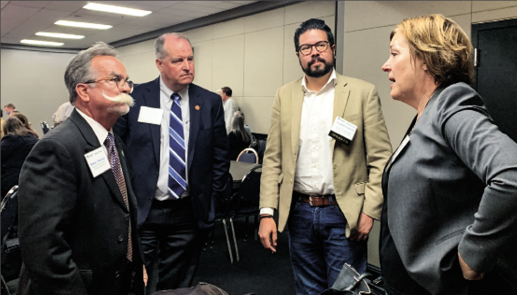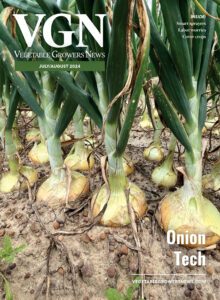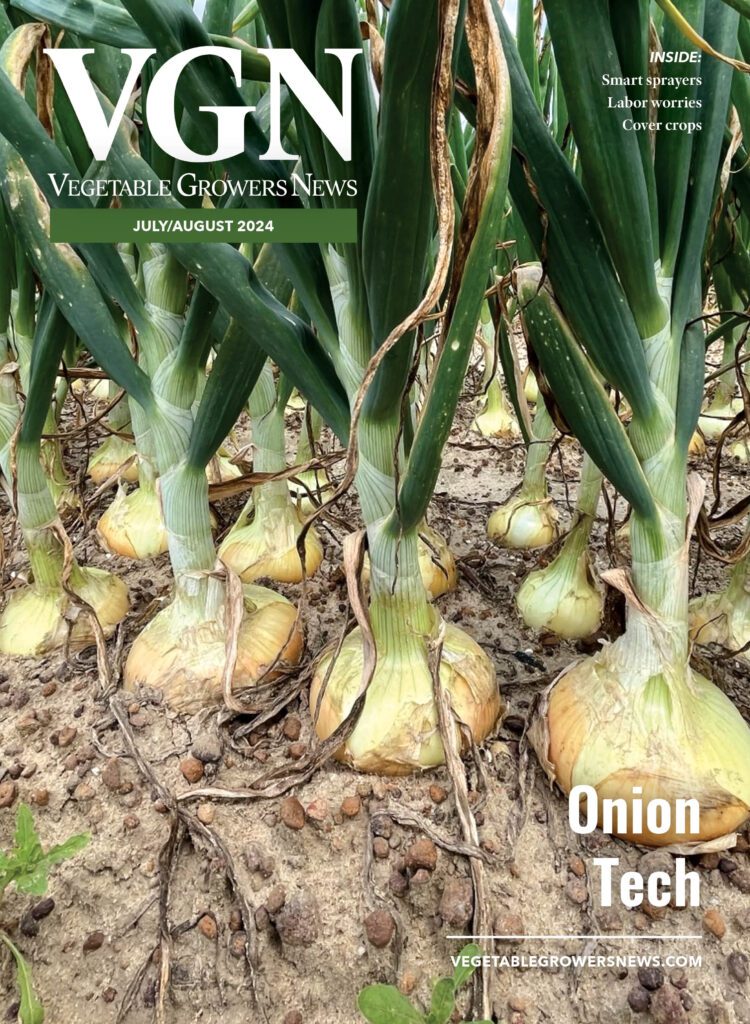May 12, 2022Local solutions central to CAFB Water Forum
Facing a third year of drought, leadership from county Farm Bureaus, spanning all regions of California, gathered in Sacramento last week to engage with state water officials about all things water.
A changing climate, shrinking snowpack, water rights, aging infrastructure, groundwater regulations and solutions to the state’s water crisis were among the topics discussed at the California Farm Bureau Water Forum. The event brought together state water officials and county Farm Bureau leaders from the Mountain, North Coast, Central Valley, Central Coast and Southern California regions.
California Farm Bureau President Jamie Johansson said drought is one of myriad issues facing farmers, along with rising costs, trade impacts and remaining challenges of the pandemic.
“We’re seeing a confluence of issues around the globe right now that are just going to compound what we know will be a severe and painful drought session,” Johansson said. “It is going to be a very challenging year.”
State and county Farm Bureaus, he said, have proposed many solutions to help solve the state’s water crisis such as more water storage, conveyance and infrastructure improvements, groundwater recharge, temperature controls, adaptive management and stormwater capture. “But we have faced roadblocks every step of the way,” Johansson said.
“We can have a state that serves the needs of farmers, consumers, as well as the environment,” he said. “But farmers have to know that you want agriculture in this state. Know that we want to be part of the solution.”
California Department of Water Resources Director Karla Nemeth discussed urgent climate challenges for California, saying, “The world is definitely changing around us, and we’ve got a lot of work to do.”
Addressing the audience, she said, “It’s the people in this room that have the most ingenuity of any sector in California. That gives me a lot of confidence that if we work together and focus on solutions, we’ll be able to do that. One thing we need to understand is we are very much in the era of extreme hydrology.”
State Water Resources Control Board Chairman E. Joaquin Esquivel discussed California’s water rights system, which sets it apart from other Western states that he said curtail water rights more often.
“It is how the water right system was built to make sure that we can manage when things come down to such scarce resources,” he said.
To avoid drastic cuts, he said, interest groups for local watersheds are discussing development of cooperative agreements as a more comprehensive approach to managing water during times of scarcity.
Esquivel said “being able to start to really dig into the water right system for the first time ever in an active way” is a key step. He said “just even looking at what’s hydrologically available, saying what water rights could support it and actively curtailing to that has been really important.”
Imperial County farmer Ronnie Leimgruber said renegotiating water rights is a huge concern for agriculture.
“Senior water rights (holders) gave concessions to allow junior water right holders access to excess flows, and that agreement was negotiated in good faith, and they realized in times of shortage they would be cut off first,” Leimgruber said. “Now people want to renegotiate.”
Conversation at the forum also focused on California’s Sustainable Groundwater Management Act. Local agencies must adopt plans that show how they intend to achieve groundwater sustainability by the 2040s. Johansson said Farm Bureau opposed SGMA, but once it became law, county Farm Bureaus and farmers participated in the process to form agencies and develop plans.
“What we know now about our local groundwater is light years ahead of where we were in 2015 when this bill passed. We’re getting there,” Johansson said.
In answering a question about a lack of agricultural representation on SGMA agencies, Nemeth said, “We are hearing this issue crop up in different parts of the state. I would put this in the category of something that’s not working, but there are some improvements we need to make, and we can make those as we propagate regulations.”
Some county Farm Bureaus weighed in on a plan to improve water quality for salmon and native fish in the Sacramento-San Joaquin Delta. Voluntary agreements unveiled in late March by the Newsom administration are an alternative to the regulatory regime of the Bay-Delta water quality control plan by the state water board. Signatories include U.S. Bureau of Reclamation, DWR and water districts in the Sacramento Valley and south of the delta.
Merced County Farm Bureau Executive Director Breanne Vandenberg asked water officials about the status of the effort as it relates to Merced River stakeholders.
Nemeth and Esquivel said their agencies are open to working with Merced Irrigation District.
“We want to continue to work with Merced,” Nemeth said. “I do think there is a solution. VAs (voluntary agreements) always work better when we can include brick and mortar projects that help the system work better. There’s water investments, infrastructure investments that the state can partner with Merced to make a more complete package.”
In response to questions from Butte, Del Norte and Solano counties about the status of water infrastructure projects such as the proposed Sites Reservoir, Nemeth said, “I share that frustration. Infrastructure is hugely important,” adding that the state should take advantage of building water infrastructure during dry periods to have for times of drought.
Representatives from several counties asked for help in streamlining the permitting process to complete groundwater recharge projects and help with the Irrigated Lands Regulatory Program. San Diego County Farm Bureau President Mary Matava described the order as “really complex” and suggested making it simpler for smaller farms.
Kevin Merrill, a winegrape grower in Santa Barbara County, said complying with various water requirements “is tough. I’ve spent a lot of time on this and a tremendous amount of money.” He asked officials to help with more grant funding, for which they noted there is state and federal grant funding available.
Several county representatives, including Amador County winegrape grower Jim Spinetta, called for improving forest management. Spinetta said practicing better forest management will help conserve water supplies.
In discussing drought and the future, Tulare County dairy farmer Joey Airoso said, “This is everybody’s problem including—and I’m part of it—the 40 million people who live in this state.
“We try not to waste water because we’re trying to preserve our ground for the next generation,” Airoso said. “Most farms have been in our families for a long time and we love this state, but we’re getting tired of being kicked, and we need some support.”
— Christine Souza, California Farm Bureau Federation; Photo at top: California Department of Water Resources Director Karla Nemeth, right, talks to, from left, Danny Merkley, California Farm Bureau director of water resources, California Farm Bureau President Jamie Johansson and State Water Resources Control Board Chairman E. Joaquin Esquivel, during the Farm Bureau Water Forum last week.
Photo: Christine Souza















